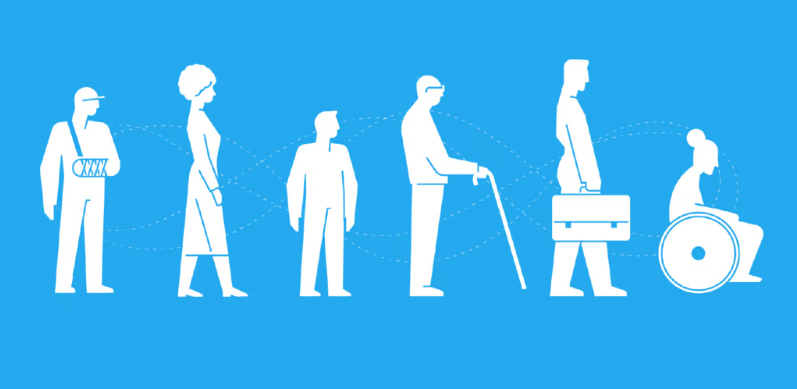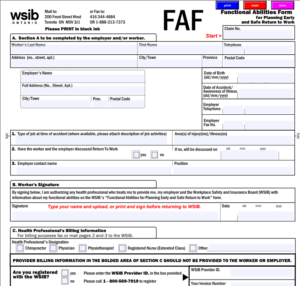In today’s diverse and inclusive society, the significance of universal design principles and accessible architecture has gained widespread recognition.
The concept of creating spaces that are accessible and welcoming to individuals of all abilities is not just a moral imperative, but also a legal requirement in many countries. Accessible architecture aims to break down barriers and enable individuals with disabilities to fully participate in social, cultural, and economic activities.
This article delves into the fundamental principles of universal design and explores how incorporating these principles into architectural practices can lead to the creation of inclusive spaces that benefit everyone.
Creating Inclusive Spaces for All
Universal design is a philosophy that strives to make environments, products, and services accessible and usable by people with diverse abilities and needs, regardless of their age, size, or disability.
It aims to eliminate physical and social barriers, ensuring equal participation and enjoyment for all individuals.
While universal design is often associated with architecture, its principles can be applied to various aspects of design, including transportation, communication, and technology.
Universal Design: A Pathway to Inclusion
Universal design is a concept that strives to create environments, products, and services that can be accessed, understood, and used by all individuals, regardless of their age, size, abilities, or disabilities.
It promotes an inclusive approach, eliminating barriers and ensuring equal opportunities for participation. The core principles of universal design emphasize equitable use, flexibility, simplicity, perceptibility, tolerance for error, low physical effort, and appropriate size and space.
By incorporating these principles into architectural practices, buildings and public spaces can be transformed into inclusive environments that promote independence, safety, and dignity for individuals of all abilities.
Equitable Use
Designs should be usable by individuals with diverse abilities and provide the same means of use for all users.
Flexibility in Use
Designs should accommodate a wide range of preferences and abilities, allowing users to choose the most suitable method of interaction.
Simple and Intuitive Use
Designs should be easy to understand, irrespective of the user’s experience, knowledge, language, or cognitive abilities.
Perceptible Information
Designs should communicate necessary information effectively through different senses, catering to individuals with varying sensory capabilities.
Tolerance for Error
Designs should minimize hazards and the potential for errors, preventing accidents or unintended consequences.
Low Physical Effort
Designs should be accessible and usable with minimal physical effort, enabling individuals with limited mobility or strength to utilize them effectively.
Size and Space for Approach and Use
Designs should provide adequate space and appropriate features to allow individuals of all sizes and mobility devices to maneuver comfortably.
Aesthetic and Minimalist Design
Designs should be visually appealing and incorporate universal aesthetics without compromising functionality or accessibility.
Accessible Architecture: Designing for Inclusion
Accessible architecture refers to the design and construction of buildings that accommodate people with disabilities, enabling them to navigate and utilize spaces independently.
Accessibility features can encompass a wide range of considerations, including ramps, elevators, wider doorways, tactile guidance systems, braille signage, visual alarms, and audio-visual aids. To create truly accessible architecture, designers and architects must go beyond mere compliance with building codes and standards. They must embrace the principles of universal design and strive to create spaces that are not only physically accessible but also aesthetically pleasing and socially inclusive.
This requires thoughtful consideration of the needs and experiences of individuals with disabilities throughout the design process. Accessible architecture encompasses various elements that promote inclusivity in built environments.
The application of universal design principles in architectural design fosters equal opportunities and enhances the quality of life for all individuals.
Building Entrances
Providing step-free entrances, ramps, and automatic doors to accommodate individuals with mobility impairments.
Interior Circulation
Ensuring wide and obstacle-free pathways, appropriate signage, and tactile information for people with visual impairments.
Vertical Access
Incorporating accessible elevators, ramps, or lifts for multi-story buildings, enabling individuals with mobility challenges to navigate freely.
Restroom Facilities
Designing spacious, fully accessible restrooms that meet the needs of individuals with disabilities, including adequate maneuvering space and grab bars.
Lighting and Acoustics
Implementing well-designed lighting systems and acoustics that enhance visibility and audibility for individuals with visual or hearing impairments.
Furniture and Fixtures
Selecting ergonomically designed furniture and fixtures that cater to a diverse range of body types, ensuring comfort and accessibility.
Wayfinding and Signage
Installing clear and consistent signage that incorporates universal symbols, large fonts, and tactile elements to aid individuals with visual impairments.
Outdoor Spaces
Designing inclusive outdoor areas, such as parks and recreational spaces, that offer accessible paths, seating options, and recreational equipment for all individuals.
The incorporation of universal design principles in architecture offers numerous advantages. First and foremost, it enhances accessibility, allowing individuals with disabilities to navigate and utilize built environments with greater ease and independence. This improved accessibility leads to enhanced user experiences, creating spaces that are inclusive, intuitive, and accommodating to diverse needs.
By promoting social inclusion, accessible architecture fosters interaction and integration, enabling individuals with disabilities to participate fully in social, cultural, and economic activities. Additionally, accessible spaces create economic opportunities by expanding the talent pool and customer base, contributing to diversity and growth. Compliance with legal and regulatory standards also ensures equal rights for individuals with disabilities and helps avoid legal complications.
However, implementing universal design principles in architecture does come with its share of challenges.
One major challenge is the consideration of cost. Incorporating accessible design features during the construction or renovation process may require additional expenses, which can be a deterrent, especially for projects with limited budgets or retrofitting older buildings. Another challenge is the lack of awareness and education among architects and designers regarding universal design principles, which can impede widespread adoption.
Resistance to change and adherence to traditional design practices also pose challenges, requiring advocacy and showcasing successful case studies to demonstrate the effectiveness and value of accessible architecture.
Design complexity and the retrofitting of existing structures further contribute to the challenges, necessitating expertise, collaboration, and careful planning.
Despite these challenges, the long-term benefits and positive impact of accessible architecture make overcoming these obstacles crucial for creating inclusive and equitable spaces.
Inclusive Spaces: Benefits for All
The adoption of universal design principles and accessible architecture goes beyond accommodating individuals with disabilities.
In fact, designing spaces with accessibility in mind benefits everyone, regardless of their abilities. A ramp designed for a wheelchair user can also benefit parents pushing strollers, travelers with luggage, or individuals with temporary injuries. Accessible signage and visual cues aid individuals with cognitive impairments and those who speak different languages.
Moreover, an inclusive environment fosters a sense of community and belonging. When spaces are designed to accommodate diverse abilities, it promotes social interaction, empathy, and understanding among individuals.
It sends a powerful message that every person, irrespective of their physical or cognitive capabilities, is valued and has the right to participate fully in society.
Conclusion
Universal design principles and accessible architecture play a vital role in creating inclusive spaces that cater to the needs of all individuals.
By incorporating these principles into architectural practices, we can break down physical and social barriers, foster inclusivity, and promote equality. Beyond fulfilling legal requirements, accessible architecture benefits society as a whole by providing spaces that are usable, safe, and enjoyable for everyone.
As we strive for a more inclusive future, it is imperative that we continue to embrace and advocate for universal design principles, ensuring that no one is left behind.
FAQs About Universal Design Principles
How can universal design principles be applied to transportation systems?
Universal design principles can be applied to transportation systems by ensuring that public transportation is accessible to individuals with diverse abilities. This includes features such as wheelchair ramps or lifts, priority seating for individuals with disabilities, audio and visual announcements, and clear signage. Universal design in transportation aims to make buses, trains, and other modes of transportation usable and comfortable for all passengers, regardless of their physical or sensory abilities.
What are some examples of technology applications that incorporate universal design principles?
Technology applications can incorporate universal design principles in various ways. For instance, mobile devices and computer software can include accessibility features such as screen readers for individuals with visual impairments, alternative input methods for individuals with mobility challenges, and adjustable font sizes and color contrast options for individuals with cognitive or visual disabilities. Websites and digital platforms can be designed with accessibility in mind, ensuring they are navigable by keyboard and screen readers, and have well-organized content that is easy to understand.
How can outdoor recreational spaces be made more inclusive?
Outdoor recreational spaces can be made more inclusive by incorporating universal design principles. This includes providing accessible paths and trails that are wide and smooth, offering seating options with backrests and armrests, and including inclusive playground equipment that can be used by children of all abilities. Additionally, considering elements like shade structures, accessible parking, and accessible restrooms helps ensure that outdoor spaces are welcoming and usable for individuals with disabilities.
What strategies can be employed to raise awareness and promote universal design principles among architects and designers?
To raise awareness and promote universal design principles among architects and designers, several strategies can be employed. These include organizing workshops, seminars, and conferences focused on accessible architecture and universal design, featuring successful case studies and examples of inclusive spaces. Collaboration with educational institutions to incorporate universal design principles into architectural curricula can also be effective. Additionally, showcasing the benefits and positive impact of accessible architecture through publications, exhibitions, and online platforms can help spread awareness and encourage wider adoption of these principles.
Are there any financial incentives or funding opportunities available to support the implementation of universal design in architecture?
Yes, there are financial incentives and funding opportunities available to support the implementation of universal design in architecture. In some countries, governments provide grants, tax credits, or subsidies to encourage the incorporation of accessibility features in buildings and public spaces. Non-profit organizations and foundations may also offer funding for projects that promote inclusivity and universal design. Additionally, some private sector companies prioritize accessibility in their corporate social responsibility initiatives and may provide financial support for projects aligned with their values. It is important to research and explore these opportunities to access financial resources that can facilitate the implementation of universal design principles in architecture.






